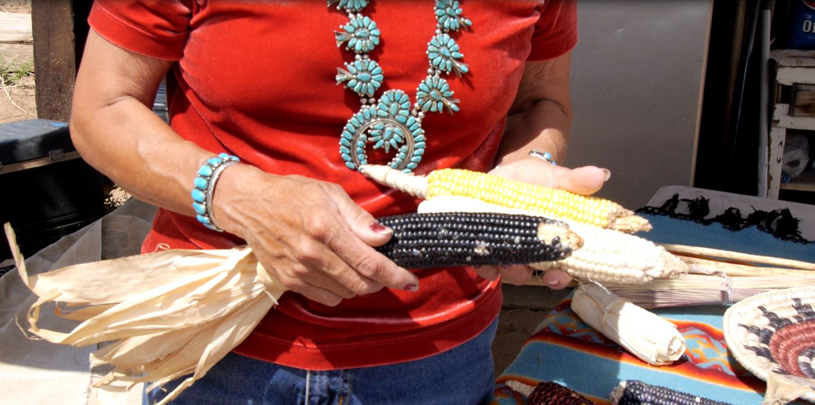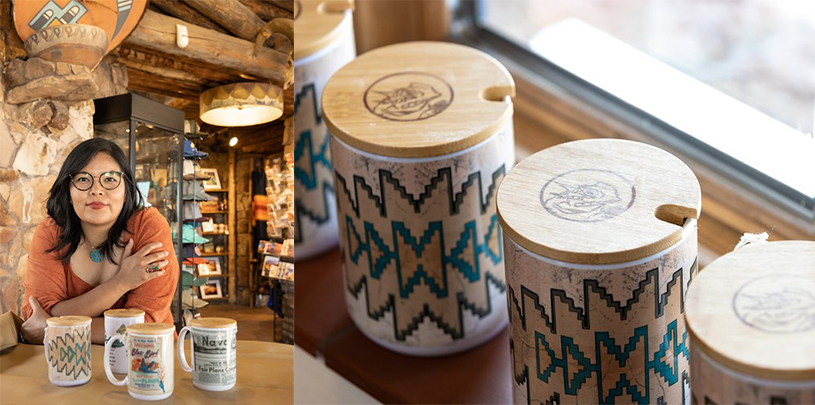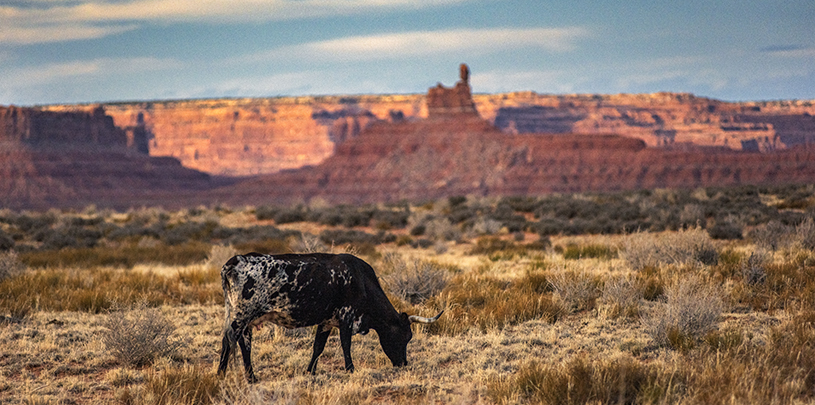
While genetically modified corn and soybeans reign supreme on most American farms, generations-old heirloom crops grow in fields across the Navajo reservation. Diné farmer Effie James’ garden in Moenave, Arizona, teems with diversity. Apricot trees, grape vines, and tomatoes grow alongside a medley of vegetables, all grown from seeds she has saved over the years.
They sit on a shelf in glass jars, labeled not by variety but by the name of the farmer from whom she got the seeds.
A few years back, Effie went to the Painted Desert Farmer’s Market in search of the most delicious melon she could find. She bought one from renowned master farmer Rose Marie Williams, whose family has farmed in Kerley Valley for generations. She cut the melon in half, scooped out the seeds, rinsed them off, and left them to dry, enjoying the sweet, juicy flesh as a bonus.
Now, each spring, she pulls out her jar labeled “Rose Marie’s Melons” to plant her own crop of the delicious fruit.
Heirloom vs. Genetically Modified Seeds
Heirloom crops, like Rose Marie’s Melons, are not used in modern industrial agriculture. Instead, genetically modified seeds account for over 90 percent of the corn, soybeans, and cotton produced in the United States. These engineered seeds produce high yields, but they also require expensive fertilizers and toxic pesticides.
As farmers convert to planting genetically modified organisms (GMOs), food varieties go extinct. The Food and Agriculture Organization estimates that 90 percent of fruit and vegetable varieties have vanished.
But on the Navajo reservation, farmers are using their traditional ecological knowledge to save heirloom seeds.
Saving Seeds, Sharing Knowledge
Saving seeds is a time-honored tradition of Navajo farmers that mimics nature. If left unharvested, ripe fruit falls to the ground and decomposes, leaving its seeds behind to sprout the following spring.
In July, the Intertribal Learning Center in Tuba City, Arizona hosted a Seed Sources Workshop to help local farmers turn last year’s bounty into next year’s harvest.




